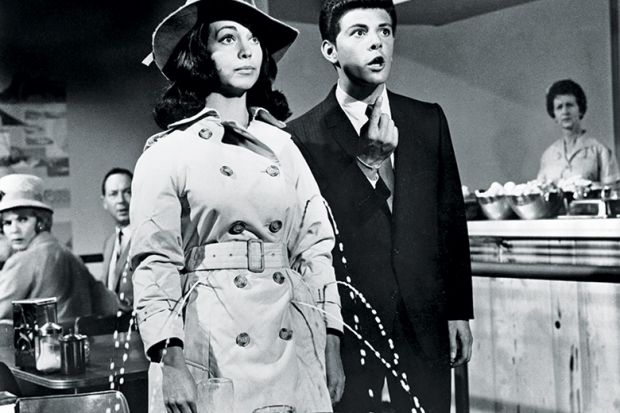The lack of women in senior roles in higher education has become a familiar refrain.
Equally familiar are the training and mentoring schemes devised to support early career female academics. But what about all those women who fall somewhere in between? Those who are well past the PhD years but not (yet) in roles we might call “senior”?
In 2016, Ineke De Moortel, Sharon Ashbrook and I coordinated the production of a booklet called Academic Women Now: Experiences of Mid-career Academic Women in Scotland, featuring profiles and career trajectories for women in the Young Academy of Scotland. We thought this would prove a useful resource for early career women, revealing how women just a little ahead of them were managing their professional and personal lives (and, notably, offering this support to women in the humanities as well as the sciences).
The positive responses inspired us to plan a follow-up project. As all three of us work at the University of St Andrews, we thought that it made sense to do something for mid-career women at our own institution. The new project includes networking and discussion events, and another booklet, Academic Women Here! On Being an Academic Woman at the University of St Andrews, which was launched on 5 February.
But Academic Women Here! has proved to be a different enterprise. While it will, we hope, also be a resource for early career women, the experience of putting it together raised some important issues about how we talk about careers (for women or men) in academia. Crucially, it is about the language we use.
Anyone who has been involved in the efforts to track and support women’s academic careers will be familiar with the metaphor of the “leaky pipeline”. It is a way of describing the declining proportion of women in increasingly senior levels.
It affects all UK universities, and St Andrews is no exception: the overall percentage of our academics who are women is 39 per cent, but only 20 per cent of our professors were women in 2016. We do, however, have the rare achievement of two female vice-chancellors in a row.
To judge by the figures produced for our institutional Athena SWAN application, grade 8 on the pay scale (ie, senior lecturers and readers) is where the “pipeline” gets “leaky” (or “blocked”). So we decided to focus our efforts on the current group of academic grade 8 women at St Andrews. We managed to persuade 44 of our 87 eligible women to share reflections on their careers and the dates of key milestones. The result is a booklet that offers readers the chance to compare career timelines and to hear the personal stories.
The booklet includes women with children as well as child-free women; some are in long-term relationships, and some are not; some are maintaining long-distance relationships, and some have suffered the breakdown of their relationships; some are in their thirties and others are nearing retirement; some have had serious health problems; some have had careers outside academia; and a significant minority are currently working part time (in a surprising variety of ways).
Many of the challenges are familiar: there are concerns about caring responsibilities, about impostor syndrome, about work-life balance and about promotion. We also noticed that “balancing” is not just a matter of “work” and “life”: our women refer to the challenges of dealing with the competing aspects of academic life, and with increasing responsibilities as the nature of the job changes over time and with seniority. Yet the undercurrent is reassuringly positive: these are all challenges that have been managed. Somehow – and in a variety of ways – they have been negotiated.
As editors, reflecting on the contributions as a whole, we have come to realise that the “pipeline” metaphor constrains and impoverishes our understanding of women’s careers. Our booklet reveals the diversity of career paths taken by these women, and also the variety of ways in which these women are currently experiencing academic life at the University of St Andrews.
Perhaps most strikingly, some of our colleagues were initially unsure whether they should participate in the project at all, suggesting that their own careers “don’t fit what you are looking for”. We have all come to appreciate that one size clearly does not fit all in academia.
Careers do not all flow along a single pipeline, or at the same pace. Women (and men) do not drift along, transported automatically from point A to point B by some force outside themselves: they work, they struggle, they get creative, and they improvise. And far from a single pipeline, there are clearly many different paths through academia.
Conceptualising women’s careers in terms of linear “ladders” or “pipelines” might have the effect of marginalising or demotivating those whose careers do not fit the perceived stereotypical ideal pattern. It would be far better for university leaders, mentors and advisers to emphasise – and value – the diversity of routes to, and through, academia.
There is no such thing as the archetypal academic woman, just as there is no single “right way” to have an academic career. Recognising that is a crucial step towards creating a diverse and inclusive staff community in our universities.
Aileen Fyfe is professor in modern British history at the University of St Andrews.
Register to continue
Why register?
- Registration is free and only takes a moment
- Once registered, you can read 3 articles a month
- Sign up for our newsletter
Subscribe
Or subscribe for unlimited access to:
- Unlimited access to news, views, insights & reviews
- Digital editions
- Digital access to THE’s university and college rankings analysis
Already registered or a current subscriber? Login








